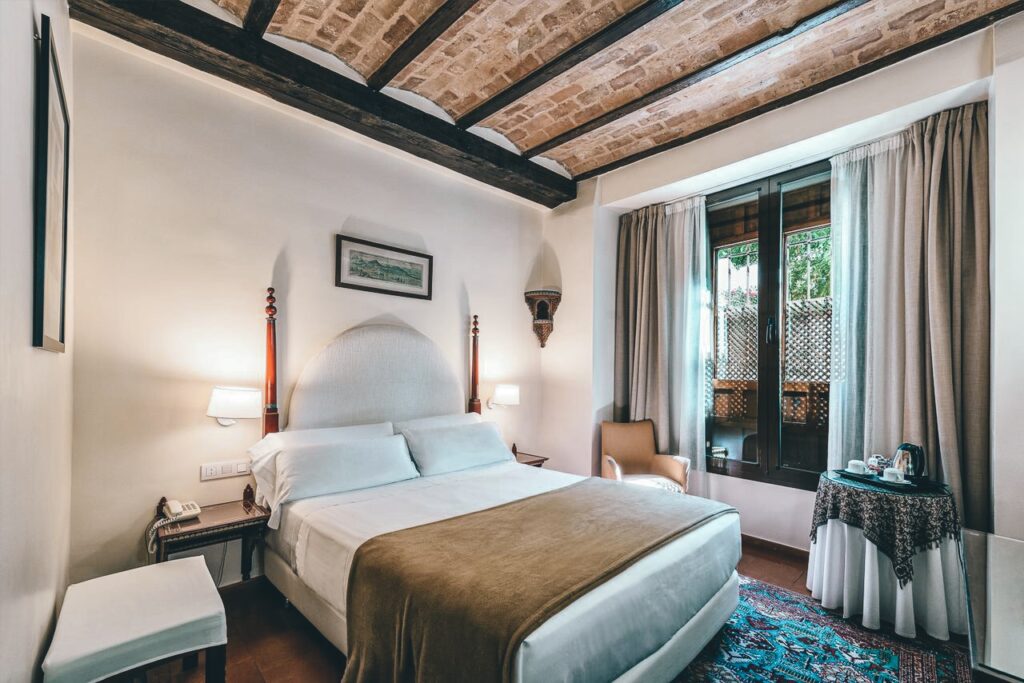Many travelers make their way to the Andalusian city of Granada to see only one landmark, though it alone justifies the journey: the Alhambra. The sprawling palace-fortress with its courtyards with shaded arcades and splashing fountains, dramatically set against the backdrop of the Sierra Nevada range, is the pinnacle of Moorish architecture in Spain. While many make a beeline for the Alhambra and then continue on to other stops such as Cordoba and Seville, Granada rewards those who linger longer whether on a quick city break or a deeper dive into its history. There are many other sites where the days of Moorish rule can feel remarkably recent even more than five centuries after Granada was conquered by the so-called Christian monarchs, Ferdinand and Isabel, and neighborhoods such as Albaicín retain an atmosphere that is often magical and mysterious.
Eat

Many of the dishes and ingredients that are thought of as synonymous with Spanish cuisine come from Andalusia: gazpacho, sherry and even tapas. Most of the country’s olive oil is produced here—you’ll find rows of the trees stretching to the horizon almost everywhere you travel in the countryside—while some of the best jamón ibérico comes from the Alpujarras region, just to the southeast of Granada.
The exact origin of one of Spain’s signature foods, churros, is disputed, but it was undoubtedly elevated to a new level when it was first paired with hot chocolate, a marriage that was made possible by Spanish ships returning, typically to Andalusia, from the New World. Café Fútbol is a Granada institution where you can start your day with churros y chocolate. The café’s outdoor seating spills out onto the Plaza de Mariana Pineda on warm days, when you may be more tempted to order a granizado (a drink made with crushed ice) or a scoop of ice cream. Afterwards, visit a few must-see sites that are nearby. Right off the plaza, the Palacio de Bibataubín is an 18th-century building named after the Moorish gate of Bibataubín that once stood on the site. A few minutes in the opposite direction, the Cuarto Real de Santo Domingo is a Moorish gem in the heart of the city center. One of the few surviving residential buildings from 13th-century Granada, it is a forerunner of the Alhambra and other more famous palaces. A plus: Admission is free.

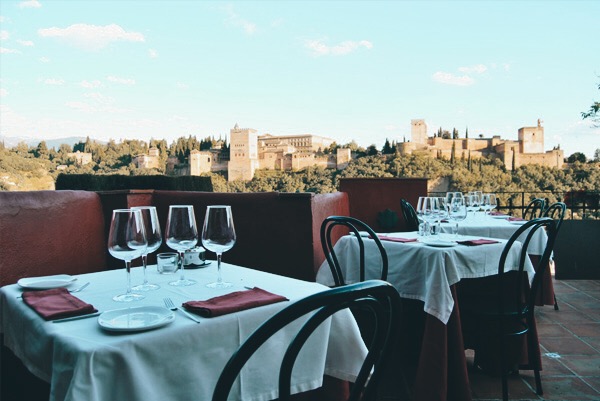
Gaze upon the Alhambra over a long lunch at Carmen Mirador de Aixa. The Albaicín (or Albayzín) neighborhood, which runs alongside the hill topped by the Alhambra, is a warren of narrow streets that follow the original Moorish plan. The area is also home to a number of restaurants whose primary appeal is the views of the palace from their terraces. Not all of them have food and service, however, that equal their settings, but the Carmen Mirador de Aixa is the best of them. Order the gazpacho (offered only when tomatoes are at their peak of ripeness) and one of the signature bacalao (salted cod) dishes. Carmen Mirador de Aixa is closed from November to Easter week. If you are visiting in the winter, Carmen de Aben Humeya is located in two historic Moorish houses surrounded by lush gardens and it offers similar views of the Alhambra—and it’s open year-round.
Play
If you are going to visit Granada, you are almost surely going to the Alhambra, the city’s iconic site and one of the world’s most remarkable works of architecture. Reservations are required and they often sell out months in advance. Before you make your flight or hotel reservations, your first step should be to make sure there are tickets to the Alhambra available on the dates you want to visit. Entries to the Nasrid Palace, the centerpiece of the complex, are timed but you should arrive early or stay on after your tour to explore the Alcazaba fortress, the Generalife summer retreat, the Palace of Carlos V and the extensive gardens.

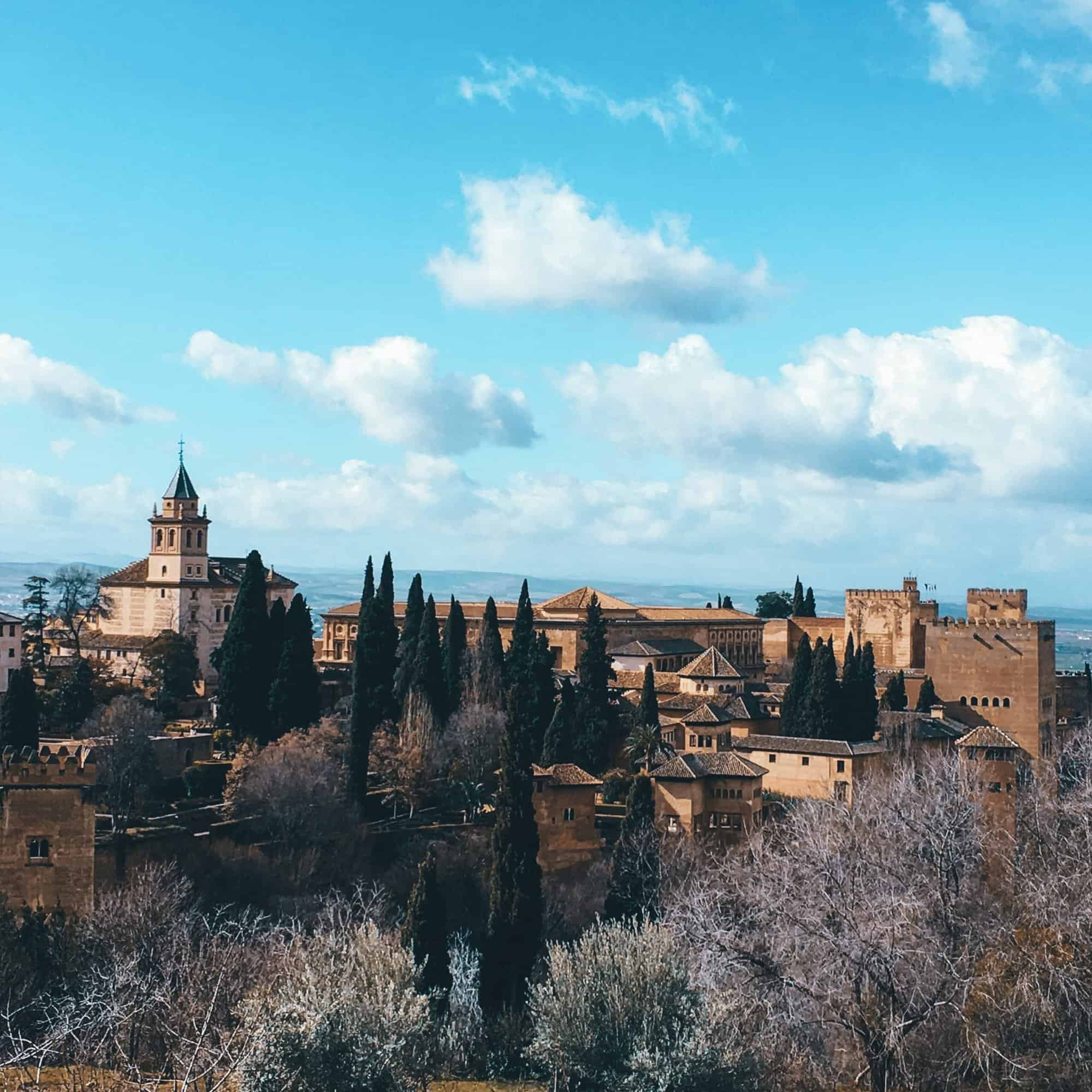
While the popularity of the Alhambra is understandable, the crowds can also diminish the experience somewhat. It is easier to admire the architecture and artistry of Nasrid design at some of Granada’s other Moorish sites. The Palacio de Dar Al-Horra (the Palace of the Honest Woman) in Albaicín was built for the mother of Boabdil, the last emir of Granada. La Madraza was originally established as a seminary, or madrassa, in the 14th century. Today it’s a cultural center that is part of the University of Granada, incorporating portions of the original madrassa as well as later Baroque and 19th- and 20th-century additions. The center hosts temporary exhibitions that provide a glimpse at Granada’s cultural and art scenes today. El Bañuelo is one of the best-preserved Arab baths in Spain. While the lavish tilework that would have once covered the walls is long gone, with some imagination it is possible to envision how they would have appeared in the 12th century. The Arab Baths, on the other hand, are not historic and while they are a transparently sanitized and romanticized fantasy of life in medieval Granada, the hammam and spa complex recreate the atmosphere of a Moorish bath house—a steam bath followed by a massage is an ideal way to end a day of visiting Granada’s historic sights.
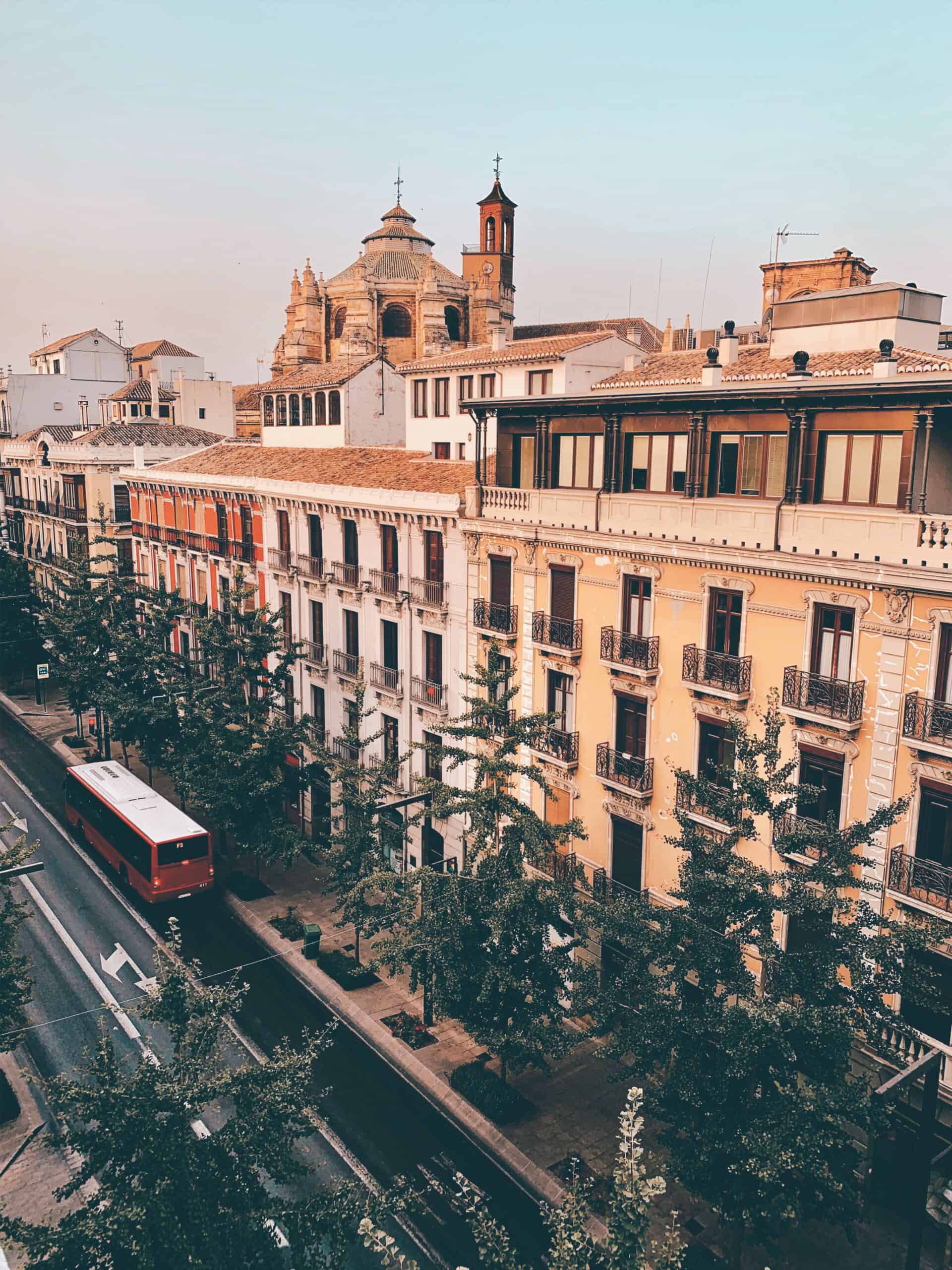
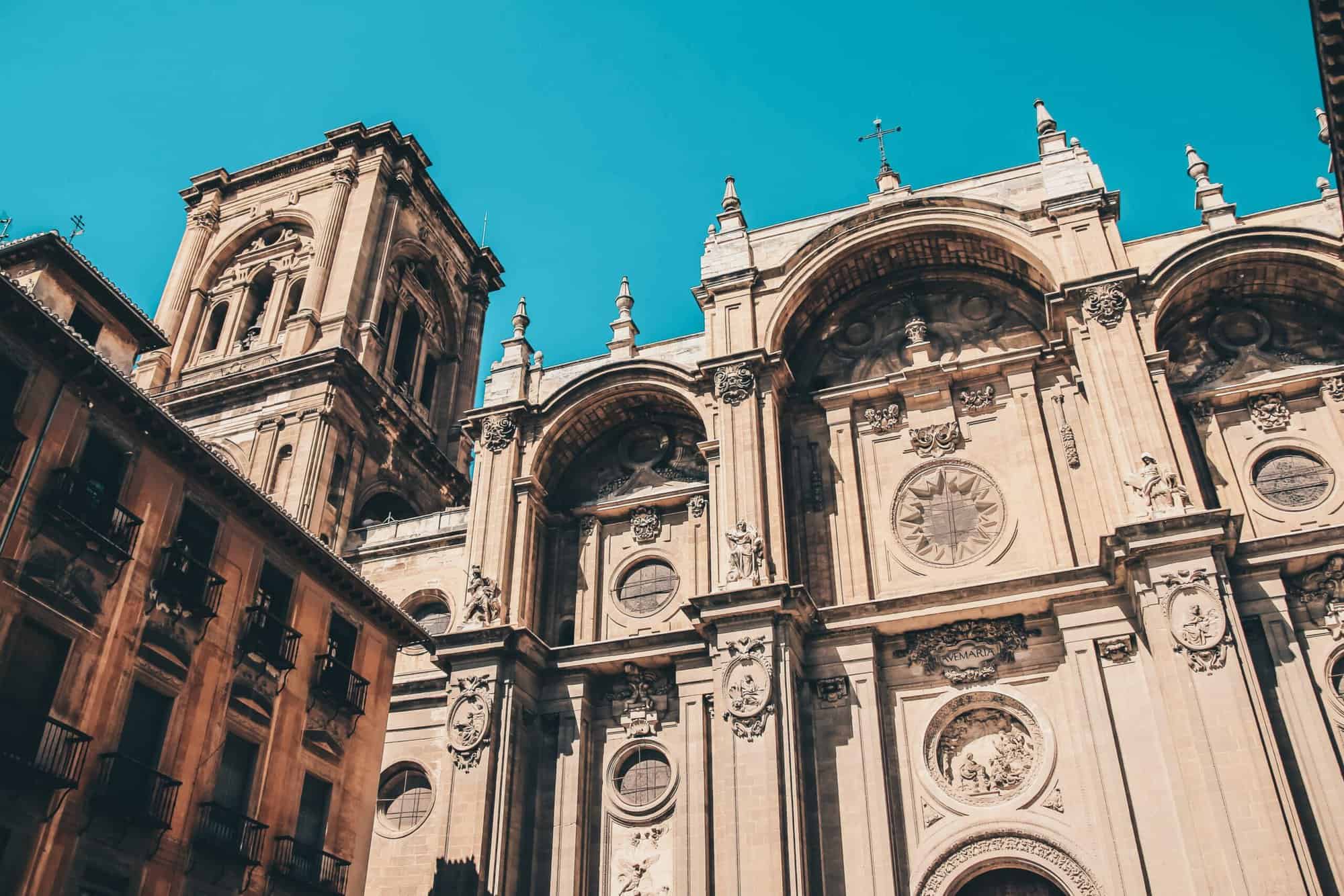
Stay
Parador de Granada
If money is no object—or you are visiting Granada on a honeymoon or to mark another milestone that justifies stretching your budget—the Parador de Granada is worth the expense. The hotel is located in a converted convent within the Alhambra grounds. You’ll get to spend a night, or nights, in the gardens and be the first to arrive in the morning, before the crowds that can be typical later in the day.
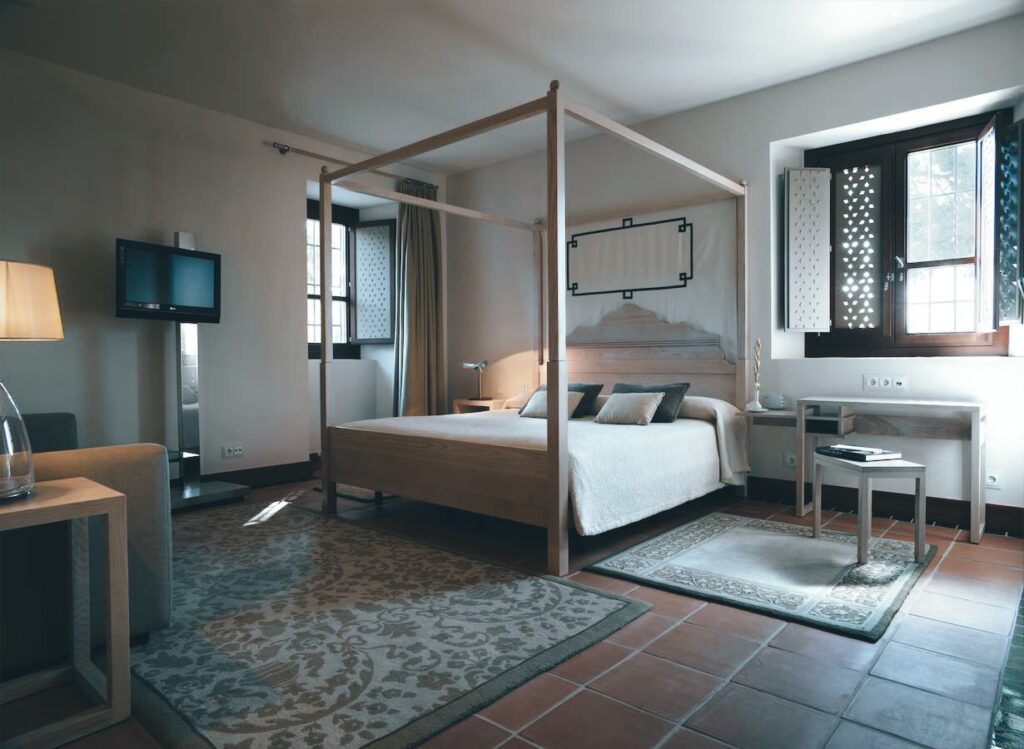

Palacio de Santa Inés
Sleep in a more modest historic palace at the Palacio de Santa Inés. The two 16th-century buildings that house the hotel date to shortly after the city was conquered by Ferdinand and Isabel in 1492. Details such as tilework, Renaissance frescoes, and the Mudejar-tiled roof have been meticulously preserved while rooms incorporate all the amenities you’d expect at a contemporary hotel. The location in the Albaicín neighborhood is convenient to many of Granada’s most famous sites: the Cathedral is less than ten minutes on foot while the Alhambra looms above (it is about a 20-minute walk to its entrance).

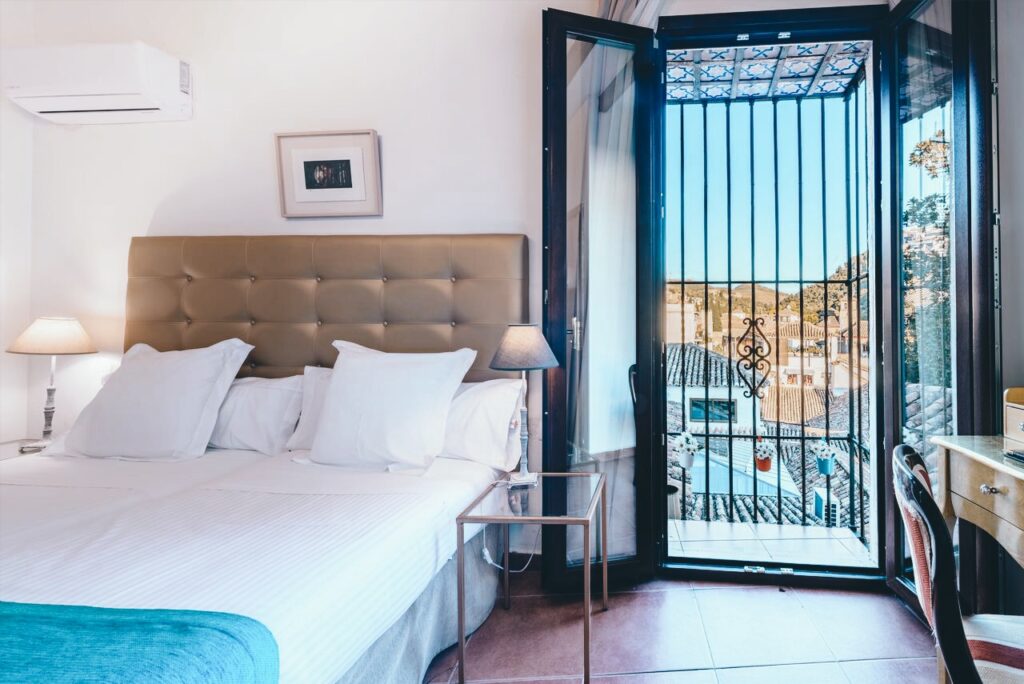
Casa Morisca
Not far from the Palacio de Santa Inés and also in Albaicín, the Casa Morisca is in an even older home, from the late 15th century. Its name comes from the Spanish term for those Moors who stayed on in Spain after the Reconquista—that is, the reconquest by the Christian monarchs. The historic building has been reborn as a 14-room hotel under the exacting eye of architect Carlos Sanchez and the result is a retreat with an evocative atmosphere thanks to details like a Moorish fountain in its central courtyard and elaborate coffered ceilings.

